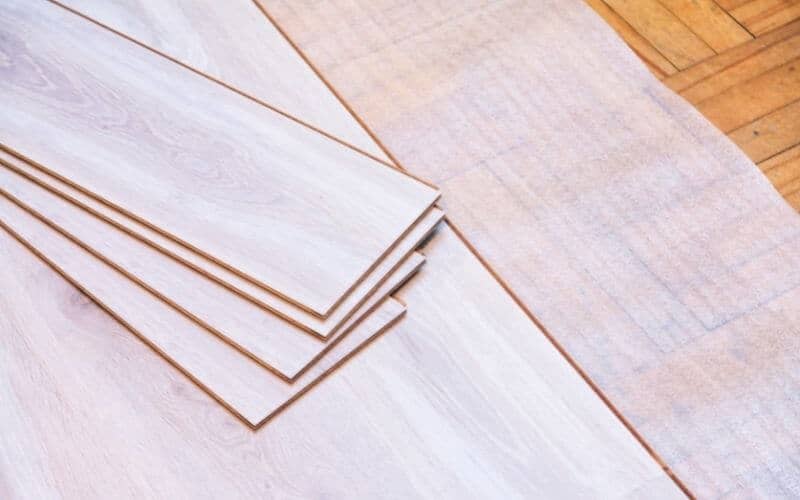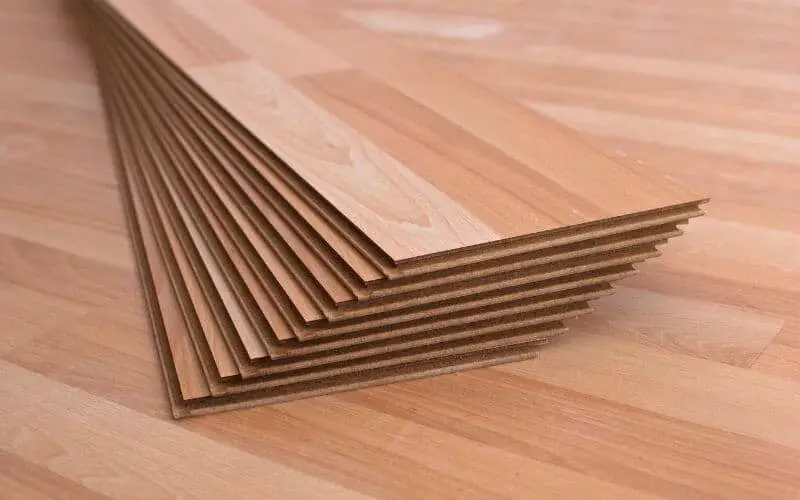Laminate is greatly loved because it is a durable, budget-friendly, and beautiful flooring option. But unfortunately, certain types of laminate flooring sometimes contain toxins and chemicals.
Laminate floor is made from adhesives which omits a toxic gas known as formaldehyde; this gas could be toxic to you, kids, and even pets. Some laminate products off-gas for about ten years. It can also be injurious to those with health problems like asthma and chronic obstructive pulmonary disorder.
Is laminate flooring toxic? Yes, laminate floor is toxic. Laminate floor omits toxic formaldehyde gas that could cause eyes, nose, and throat problems when exposed to it for too long. but some brands have been marketed to have a very low level of toxic gas, making them safe for flooring.
Read: How to remove adhesive from laminate flooring
Is Laminate Flooring Toxic?
Table of Contents
Yes, laminate flooring is toxic. This is due to the wood-bonding adhesives that laminate floor is made from. This adhesive consists of melamine resin formaldehyde, cyanuric acid, isocyanates, and aluminum oxide, all of which can be harmful to your health.
The melamine resin formaldehyde is usually close to the surface of the laminate. The use of formaldehyde is unavoidable as it is a base component of laminate flooring. However, buying certain brands with less use of the toxin will reduce your exposure to this component.
There is standard laminate which is manufactured by industrial regulations and is as safe as any normal flooring can be.
Read: How to make laminate floor less slippery
Why is Laminate Flooring Toxic?
To understand why laminate flooring is toxic, let’s look at how it is made
Laminate flooring is made up of four different layers and has HDF (high-density wood fiber)as the main component. Laminate flooring is made from compressed wood fibers extracted from wood chips.
The HDF core of laminate flooring varies in resistance, density, thickness, and its ability to withstand moisture depending on how quality the floor is.
These wood fibers of the HDF core are held together with a wood bonding adhesive. There are a variety of adhesives they can use for this, like; urea-formaldehyde, phenol-formaldehyde, melamine-formaldehyde, polyvinyl acetate, or soy flour adhesive.
These substances emit variations of toxic chemical gases and can have a negative impact on both your indoor air quality and even your health if they emit high levels of the toxin.
Underneath this HDF core is a balancing paper, a protection layer that protects the laminate from warping or swelling. The balancing paper does this by providing protection from moisture.
The top side of the laminate flooring, which is the HDF floor panel, is finished off with decorative paper, which makes laminate flooring look like the real deal; hardwood floor.
These are actually paper-based sheets available in a range of colors, styles, and patterns, and it gives your laminate its final aesthetic. Unfortunately, these design layers may contain harmful chemicals in their dyes.
Laminate flooring also has a wear layer that contains the most toxin. The wear layer is made from a hard, durable material made from resin. You will find this listed in the product description as ‘melamine resin.’
Unfortunately, this melamine is simply ‘melamine-formaldehyde, which, as you already know, is a toxin and can cause lots of health problems and a reduction in at-home air quality. This melamine resin is then hardened with aluminum oxide, which is also a toxin.
All these components of a laminate floor are then held together with adhesive making the overall toxic composition of a laminate floor to be adhesives, aluminum-oxide, and formaldehyde.
How Long Does Laminate Flooring Off- Gas For?
Laminate flooring can off-gas for up ten years. But, the formaldehyde emissions decrease over time, reducing the toxicity levels over the years.
Several factors also affect the level of gas released, like temperature, humidity, space available for adequate airflow, and the amount of ventilation the area and the flooring receives.
Not only will exposure to high temperatures increase the emission level of formaldehyde, but it can also cause the floor to expand, bend, and warp.
If you live in a region with a hot climate, invest in a heavy-duty air cooling system, or opt for other flooring types, like tile or other flooring options with lower toxicity levels.
How to reduce the toxicity levels of laminate floor?
- Open your windows for a few minutes every day to increase ventilation and allow clean air into your home.
- Install a heavy-duty air conditioning system in your home.
- Do not smoke inside your home.
- Maintain your home temperature and humidity and keep them low
Do you need to Uninstall your Laminate Flooring?
If your laminate floor has been installed for over ten years, the toxicity levels may have decreased, so its risk should be reduced, so you do not need to uninstall them.
However, if you are worried about formaldehyde exposure, then you can hire a professional to come and inspect your air for any excessive level of toxins, especially if it’s beginning to affect your health.
If you hire a professional to test your environment, they can advise you on any further steps to take.
If your laminate flooring was recently installed, removing them can increase the levels of formaldehyde, so it is very important that you consult a professional before taking any action to avoid creating a worse situation that could be more detrimental to your health or safety than when the floor is left in place.
If you notice any strong chemical odors, pickle smell, or if you are starting to experience breathing problems or irritations whenever you are in your home, promptly seek professional help.
Keep in mind that formaldehyde smells like pickles, and you should immediately seek professional help if you notice any of these signs.
Read: How to remove adhesive from laminate floor
Are there Laminate Flooring without Formaldehyde
Finding out that laminate floor contains formaldehyde can be a total turnoff if you are looking to install laminate flooring in your home.
But thankfully, not all laminate flooring uses formaldehyde. But they make use of other chemicals, as there is no laminate flooring that is totally chemical-free, and each chemical may have health consequences when used in large quantities.
All laminate flooring requires strong adhesives that will hold the fibers together—making it impossible to have a laminate floor that is completely VOC-free or non-toxic. Although formaldehyde poses the most risk, there are also health concerns of other chemicals as well.
Melamine and cyanuric acid cause severe and irreversible liver damage.
Aluminum oxide can cause asthma and affects the cerebral vessels, which can lead to the reduction of intelligence.
Isocyanates and formaldehyde are carcinogenic substances and promote the formulation of cancer.
Formaldehyde exposure causes adverse health effects and symptoms, including eye, throat, skin, and nose irritation, allergic reactions, coughing, wheezing, etc. It is also a carcinogenic substance and can cause cancer.
Formaldehyde is a colorless invisible gas and smells like pickles. Aside from laminate floor, formaldehyde is also used in the production of many products for decades, such as fabrics, wallpapers, and paints, so you should also be wary of its inclusion in different products.
Read: Best steam mop for laminate floors
Conclusion
The use of harmful chemicals like formaldehyde and other toxins in laminate floor can make you wonder, “is laminate flooring toxic?
The answer is yes! Laminate floor is toxic, but there are ways to live safely in your home even if you already have laminate floor installed.
Maintain the humidity and temperature of your home and increase the ventilation to reduce exposure to formaldehyde in your home.

